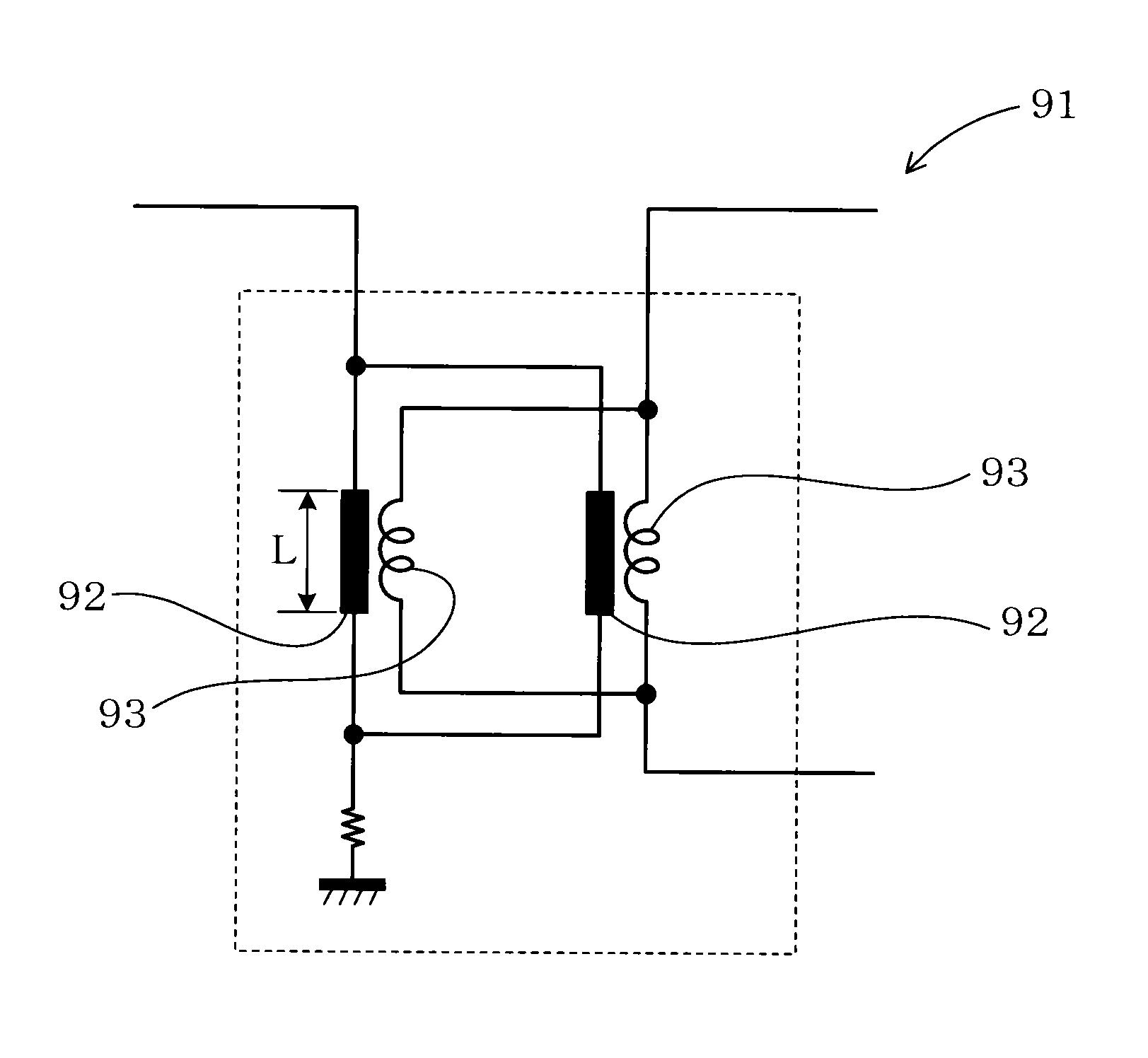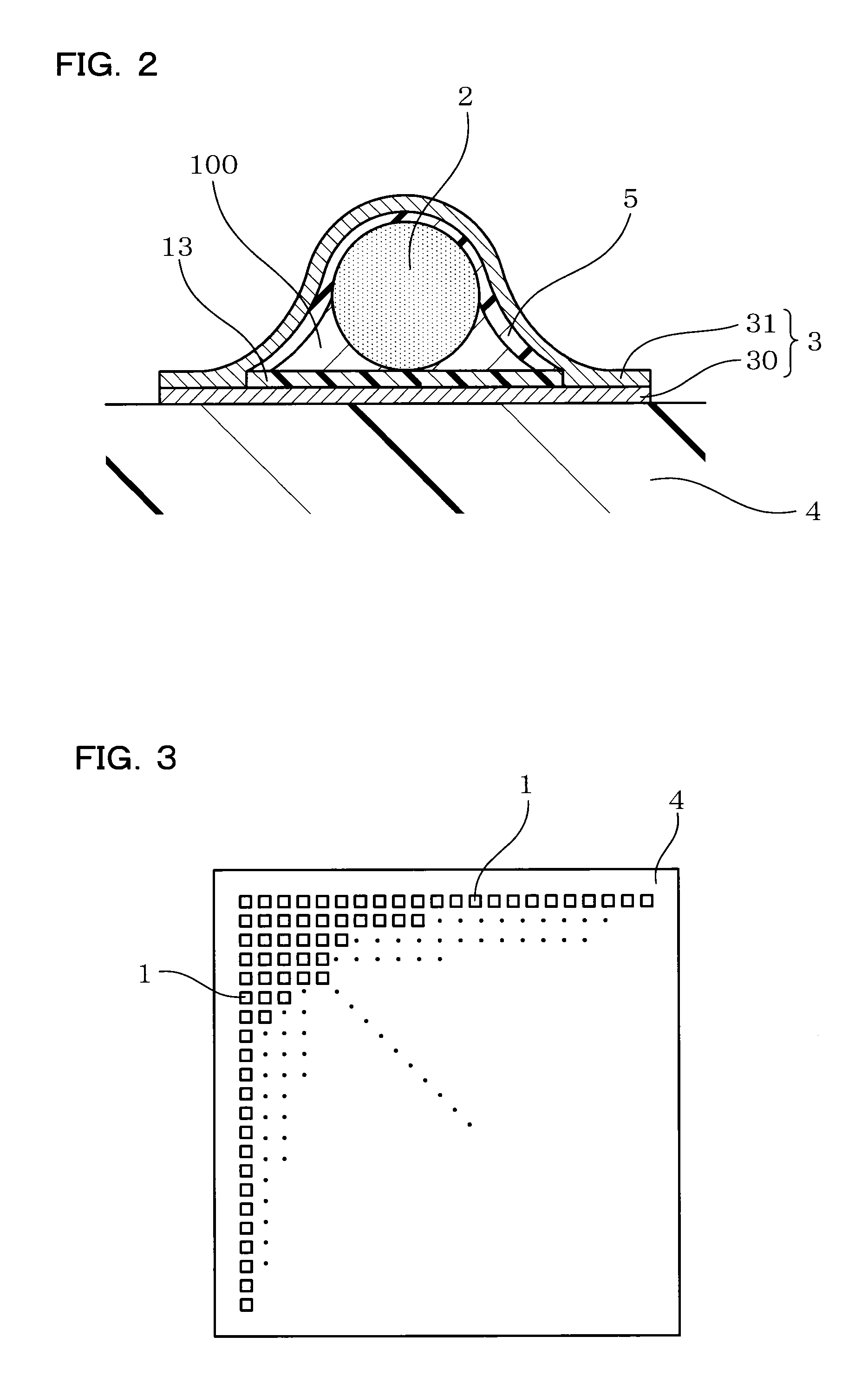Magneto-impedance sensor element and method for producing the same
- Summary
- Abstract
- Description
- Claims
- Application Information
AI Technical Summary
Benefits of technology
Problems solved by technology
Method used
Image
Examples
example 1
[0048]Magneto-impedance sensor elements according to Example of the present invention will be explained using FIGS. 1 to 11. As shown in FIGS. 1 and 2, an MI sensor element 1 of the present Example includes a substrate 4 formed of a non-magnetic material, a plurality of magneto-sensitive bodies 2 (2a and 2b), and a plurality of detecting coils 3 (3a and 3b).
[0049]The magneto-sensitive body 2 is formed of an amorphous material, and is fixed on the substrate 4. The plurality of magneto-sensitive bodies 2 are electrically connected to each other.
[0050]Also, the detecting coils 3 are formed by wounding around each magneto-sensitive body 2, and are electrically connected to each other.
[0051]The MI sensor element 1 is configured so that a voltage corresponding to a magnetic field strength acting on the magneto-sensitive body 2 is output from the detecting coil 3 by flowing a pulse current or a high-frequency current to the magneto-sensitive body 2.
[0052]The plurality of magneto-sensitive ...
example 2
[0084]The present Example is an example in which the number of magneto-sensitive bodies 21 is changed. As shown in FIG. 12, an MI sensor element 1 in the present Example has a magneto-sensitive body group 21 (21a) including a plurality of magneto-sensitive bodies 2, which are formed by cutting one amorphous wire 20 and are positioned in parallel to an axis line direction. The MI sensor element 1 also has the magneto-sensitive body group 21 (21b) formed by cutting the amorphous wire 20, which is different from the amorphous wire 20 used for forming the magneto-sensitive body group 21a. These groups 21a and 21b of the plurality of magneto-sensitive bodies are positioned adjacent to each other in a radial direction X. One detecting coil 3 is wound around the plurality of magneto-sensitive bodies 2, which are adjacent to each other in the radial direction X.
[0085]One detecting coil 3a is connected to other detecting coil 3b in series through a coil junction 15.
[0086]Other components are...
example 3
[0089]The present Example is an example in which the number and the position of magneto-sensitive bodies 21 are changed. The MI sensor element 1 in the present Example has a magneto-sensitive body group 21 (21a) including a plurality of magneto-sensitive bodies 2, which are formed by cutting one amorphous wire 20 and are positioned in parallel to an axis line direction. The MI sensor element also has a magneto-sensitive body group 21 (21b) formed by cutting the amorphous wire 20, which is different from the amorphous wire 20 used for forming the magneto-sensitive body group 21a. These groups 21a and 21b of the plurality of magneto-sensitive bodies are positioned adjacent to each other in a radial direction X. A detecting coil 3 is wound around each magneto-sensitive body 2. The plurality of detecting coils 3 are connected to each other in series through the coil junctions 15.
[0090]Other components are the same as in Example 1.
[0091]Effects in the present Example will be explained. T...
PUM
| Property | Measurement | Unit |
|---|---|---|
| Strength | aaaaa | aaaaa |
| Sensitivity | aaaaa | aaaaa |
| Electric impedance | aaaaa | aaaaa |
Abstract
Description
Claims
Application Information
 Login to View More
Login to View More - R&D
- Intellectual Property
- Life Sciences
- Materials
- Tech Scout
- Unparalleled Data Quality
- Higher Quality Content
- 60% Fewer Hallucinations
Browse by: Latest US Patents, China's latest patents, Technical Efficacy Thesaurus, Application Domain, Technology Topic, Popular Technical Reports.
© 2025 PatSnap. All rights reserved.Legal|Privacy policy|Modern Slavery Act Transparency Statement|Sitemap|About US| Contact US: help@patsnap.com



